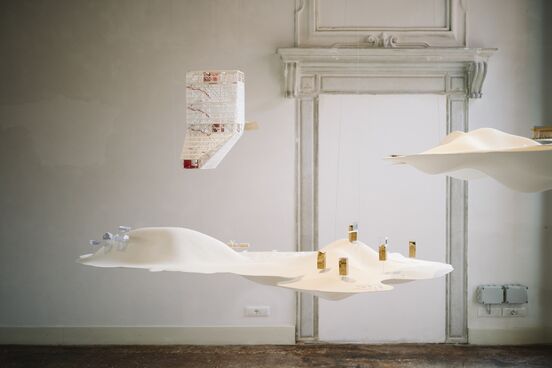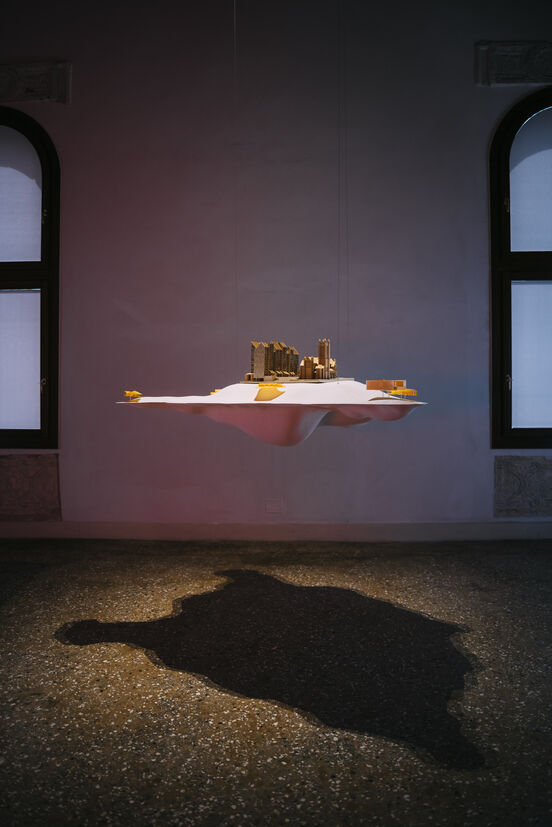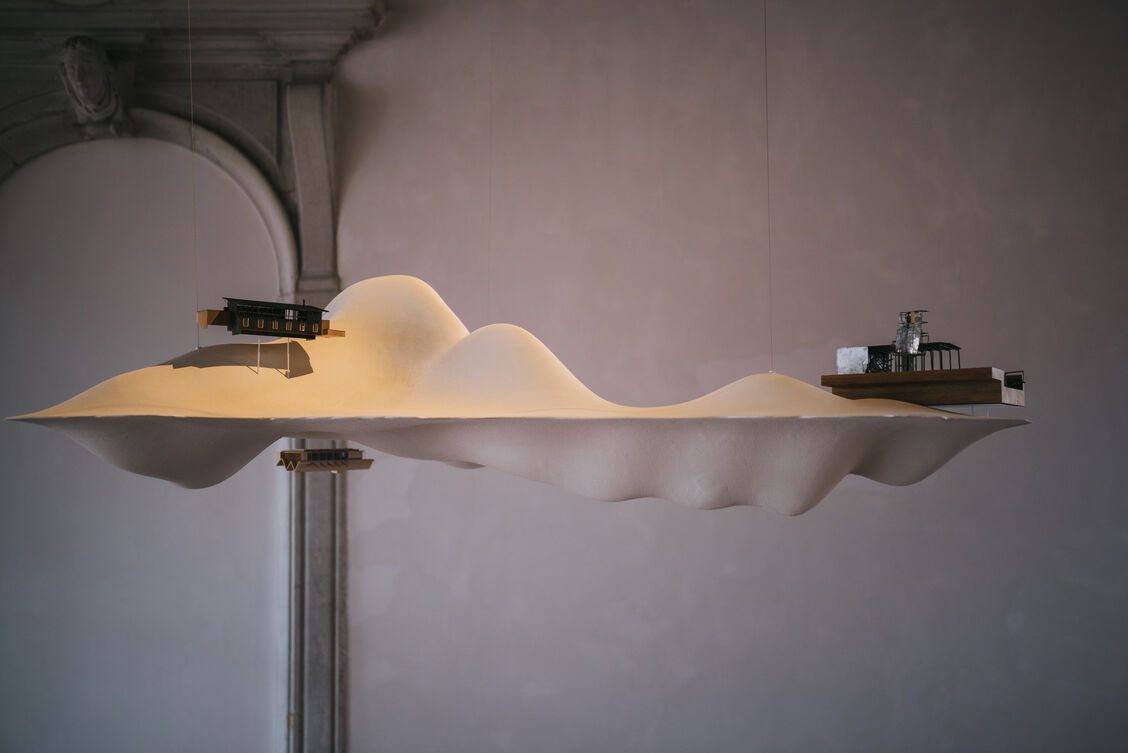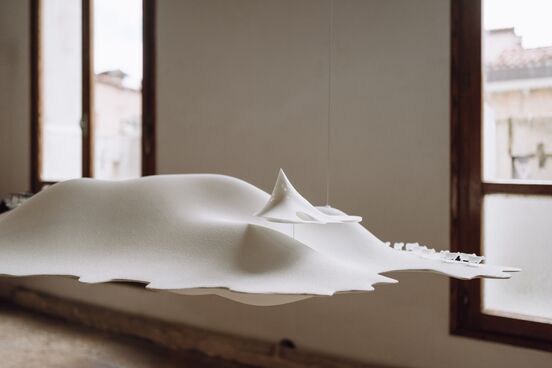Future Islands, which was New Zealand’s exhibition at the 2016 Venice Architecture Biennale, is about the practice and promise of architecture in this country – a small, open society that is diverse, changing and economically (and seismically) vulnerable. In the exhibition, a grouping of floating forms – light, tough shells fabricated by a boat-building company – occupy a sea of space. Models of more than 50 architectural projects are arranged on or near, these ‘islands’. Some projects sit provisionally on their sites; others seem to have been shaken free of their foundations altogether.
Future Islands is designed as a navigational experience: it is designed to be moved through. Visitors are free to make their own inter-island connections – there’s no prescribed route. The exhibition is not didactic, but it does make a case for the heterogeneity of architectural practice in New Zealand, and the unsettled state of contemporary architecture, generally. With its untethered and even upside-down models, Future Islands has some fun with the commonplace assertion in New Zealand architecture that buildings arise ‘naturally’ from the landscape.
The exhibition, optimistically, makes the case for architectural exploration. It includes projects at very different scales, from large social and educational buildings by New Zealand’s biggest architectural firms to tiny structures designed and built by recent graduates. There is a strong strain of inventiveness running through the exhibition: many of the projects manifest a desire to create alternative forms of practice, to be entrepreneurial, to think of new ways to do ‘architecture’.
The exhibition’s ‘islands’ are a play upon New Zealand’s insular condition, but they also allude to the rich literary and scientific narratives of islands as sites of possibility – as places of uninhibited or necessary social experiment, or incubators of evolutionary development. Accordingly, Future Islands includes many unbuilt and purely speculative projects. The exhibition seeks to provide many perspectives on the one place. In this, it draws inspiration from one narrative in particular: Italo Calvino’s allegorical novel Invisible Cities, in which the Venetian merchant adventurer Marco Polo entrances Kublai Khan with stories of wondrous places he has encountered. All these places, it turns out, are the same place – Polo’s own city.
This narrative device resonated with our exhibition purpose. What better way to present our architecture in Venice? The projects on the archipelago of Future Islands – whether real or imagined, they’re all stories about this place.
Charles Walker
Creative Director, Future Islands

All images are of the exhibition installed in Palazzo Bollani, Venice, 28 May – 27 November 2016.

All images: David St George

